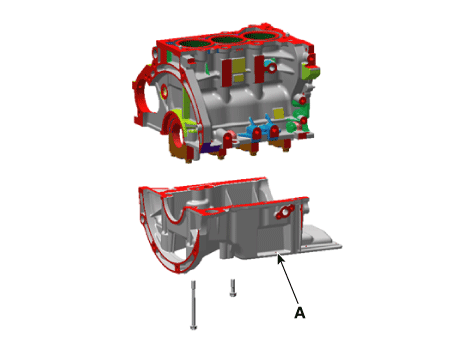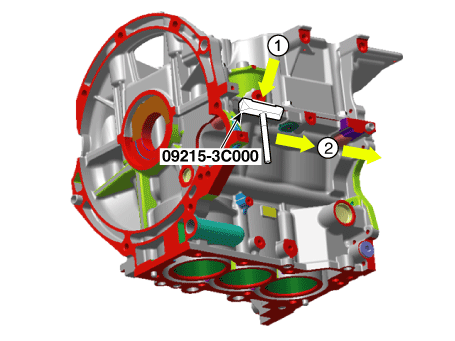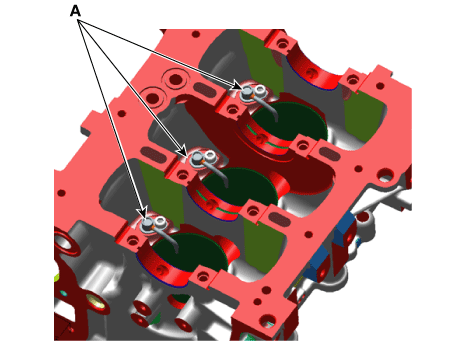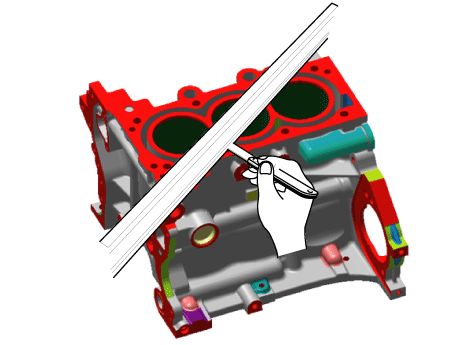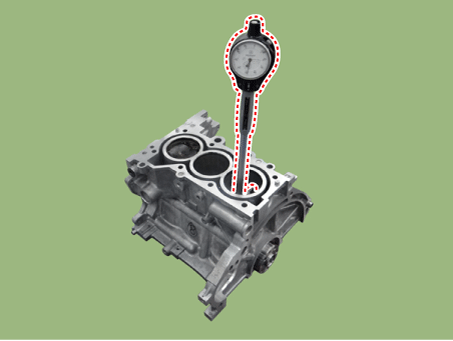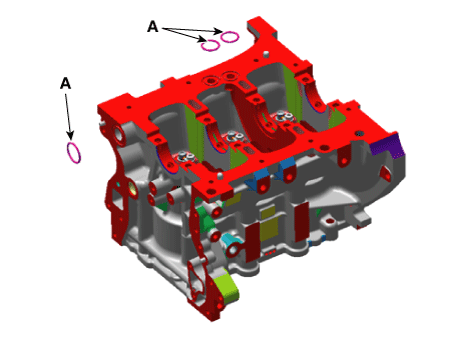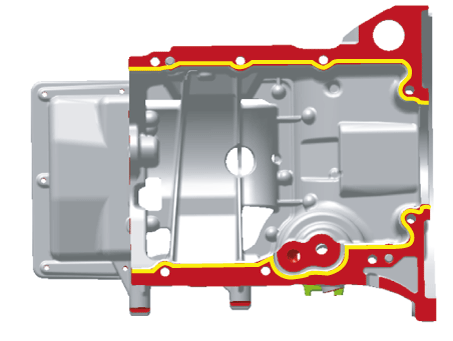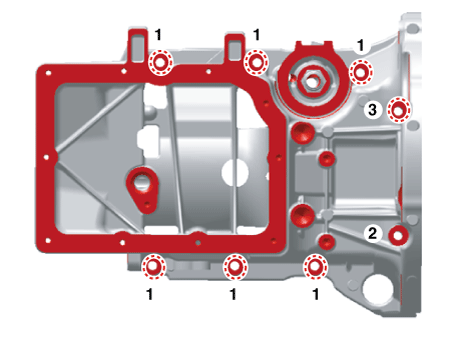Kia Picanto: Cylinder Block Assembly / Cylinder Block
Repair procedures
| Disassembly |
|
|
| 1. | Remove the engine and transaxle assembly.
(Refer to Engine and Transaxle Assembly - "Engine And Transaxle Assembly")
|
| 2. | Remove the transaxle assembly from the engine assembly.
(Refer to Manual Transaxle System - "Manual Transaxle")
|
| 3. | Remove the flywheel.
(Refer to Cylinder Block Assembly - "Flywheel")
|
| 4. | Remove the rear oil seal.
(Refer to Cylinder Block Assembly - "Rear Oil Seal")
|
| 5. | Install the engine assembly to engine stand for disassembly. |
| 6. | Remove the cylinder head cover.
(Refer to Cylinder Head Assembly - “Cylinder Head Cover”)
|
| 7. | Remove the thermostat housing.
(Refer to Cooling System - “Thermostat”)
|
| 8. | Remove the timing chain.
(Refer to Timing System - “Timing Chain”)
|
| 9. | Remove the intake manifold.
(Refer to Intake and Exhaust System - "Intake Manifold")
|
| 10. | Remove the turbo manifold module.
(Refer to Intake and Exhaust System - "Turbo Manifold Module")
|
| 11. | Remove the cylinder head.
(Refer to Cylinder Head Assembly - “Cylinder Head”)
|
| 12. | Remove the oil pan and the oil screen.
(Refer to Lubrication System - “Oil pan”)
|
| 13. | Remove the ladder frame (A). Insert
the blade of SST (09215-3C000) between the cylinder block and the
ladder frame and cut out applied sealer. Then, remove the ladder frame.
|
| 14. | Check the connecting rod side clearance.
(Refer to Cylinder Block Assembly - "Piston And Connecting Rod")
|
| 15. | Check the connecting rod cap oil clearance.
(Refer to Cylinder Block Assembly - "Piston And Connecting Rod")
|
| 16. | Remove the piston and connecting rod assemblies.
(Refer to Cylinder Block Assembly - "Piston and Connecting Rod")
|
| 17. | Check the main bearing oil clearance.
(Refer to Cylinder Block Assembly - "Crankshaft")
|
| 18. | Check the crankshaft end play.
(Refer to Cylinder Block Assembly - "Crankshaft")
|
| 19. | Remove the crankshaft.
(Refer to Cylinder Block Assembly - "Crankshaft")
|
| 20. | Remove the water jacket insert.
(Refer to Cylinder block - "Water Jacket Insert")
|
| 21. | Remove the oil jet (A).
|
| Inspection |
| 1. | Remove the gasket material. Using a gasket scraper, remove all the gasket material from the top surface of the cylinder block. |
| 2. | Clean the cylinder block. Using a soft brush and solvent, thoroughly clean the cylinder block. |
| 3. | Inspect the top surface of the cylinder block for flatness. Using a precision straight edge and feeler gauge, measure the surface contacting the cylinder head gasket for warpage.
|
| 4. | Inspect the cylinder bore. Visually check the cylinder for vertical scratches. If deep scratches are present, replace the cylinder block. |
| 5. | Inspect the cylinder bore diameter. Using a cylinder bore gauge, measure the cylinder bore diameter at position in the thrust and axial direction.
|
| Reassembly |
| 1. | Install the oil jet (A).
|
| 2. | Install the water jacket insert.
(Refer to Cylinder block - "Water Jacket Insert")
|
| 3. | Install the crankshaft.
(Refer to Cylinder Block Assembly - "Crankshaft")
|
| 4. | Check the crankshaft end play.
(Refer to Cylinder Block Assembly - "Crankshaft")
|
| 5. | Check the main bearing oil clearance.
(Refer to Cylinder Block Assembly - "Crankshaft")
|
| 6. | Install the piston and connecting rod assemblies.
(Refer to Cylinder Block Assembly - "Piston and Connecting Rod")
|
| 7. | Check the connecting rod cap oil clearance.
(Refer to Cylinder Block Assembly - "Piston And Connecting Rod")
|
| 8. | Check the connecting rod side clearance.
(Refer to Cylinder Block Assembly - "Piston And Connecting Rod")
|
| 9. | Install the ladder frame.
|
| 10. | Assemble the remaining parts in the reverse order of disassembly.
|
 Crankshaft
Crankshaft
Repair procedures
Disassembly
•
Use fender covers to avoid damaging painted surfaces.•
To
avoid damaging the ...
 Cylinder Head Assembly
Cylinder Head Assembly
Components and components location
Components
1. Cylinder head gasket 2. Cylinder head 3. Intake oil control valve (OCV) 4. Exhaust oil control valve (OCV) 5. Exhaust camshaft position senso ...
Other information:
Kia Picanto JA 2017-2025 Owner's Manual: Why didn’t my air bag go off in a collision? (Inflation and noninflation conditions of the air bag)
There are many types of accidents in which the air bag would not be expected to provide additional protection. These include rear impacts, second or third collisions in multiple impact accidents, as well as low speed impacts. Air bag collision sensors 1. SRS control module / Rollover s ...
Kia Picanto JA 2017-2025 Owner's Manual: To decrease the cruising speed
Follow either of these procedures: Move the lever down (to SET-) and hold it. Your vehicle will gradually slow down. Release the lever at the speed you want to maintain. Move the lever down (to SET-) and release it immediately. The cruising speed will decrease by 2.0 km/h ( ...
Copyright © www.kpicanto.com 2017-2025




